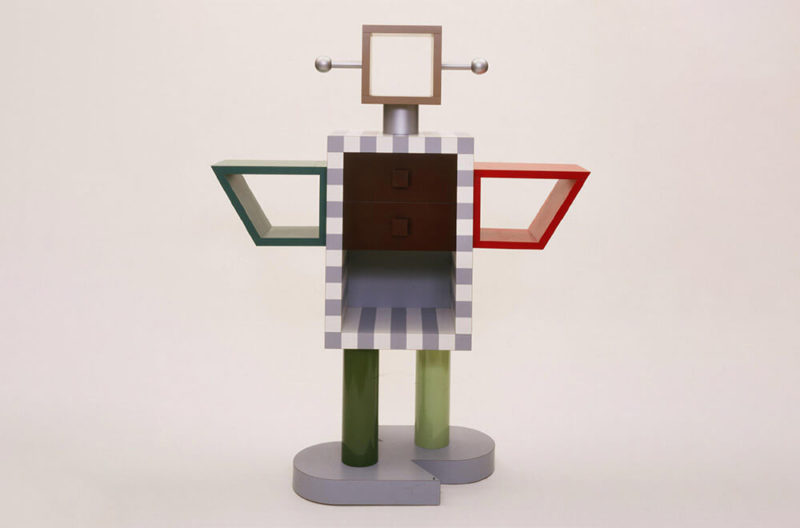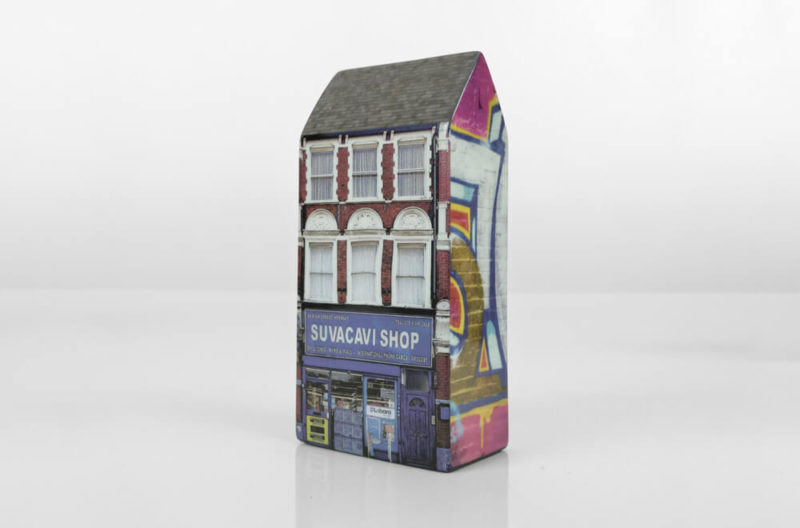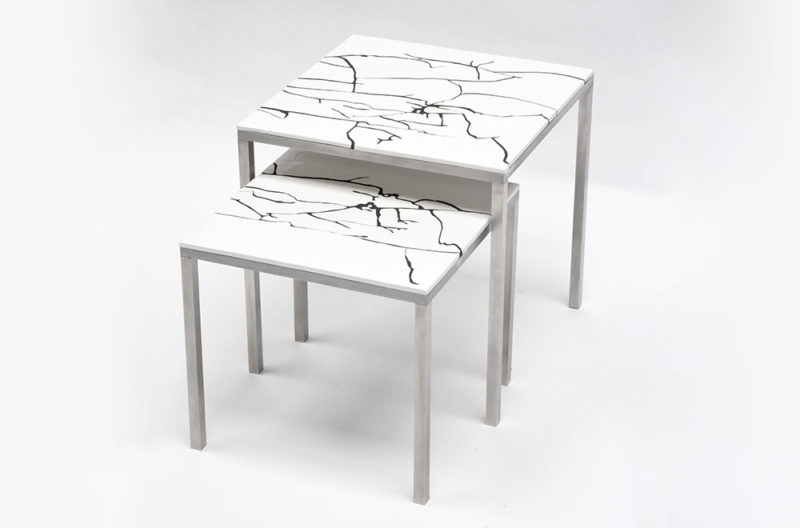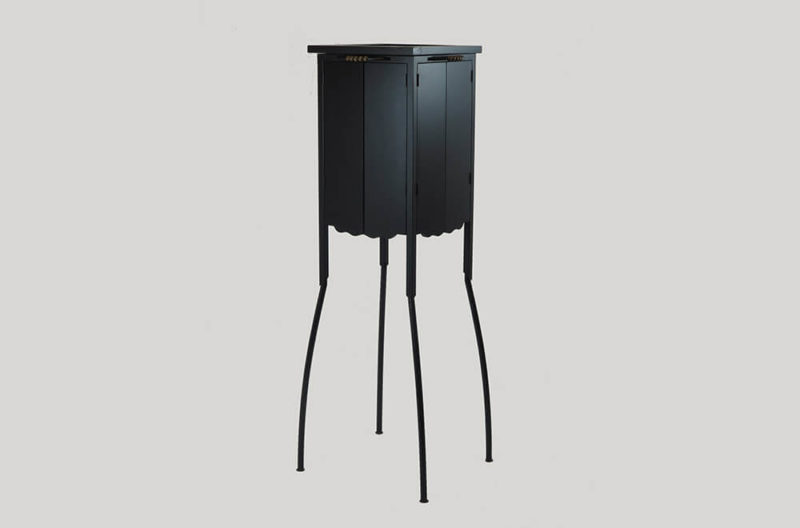Pista Horror: Year of the Rat
Menacing, humorous and rich in symbolism, the Hungarian artist debuts in London with his neosurrealist painted tiles.
David Kovats Gallery, 80 Long Acre, London WC2
December 2020 – 10th January 2021

Installation view Year of the Rat (left to right): Pista Horror, ‘Year of the Rat’, ‘Azamatov’, ‘Miraculous Deer’, 2020
COURTESY: David Kovats Gallery
VISIT BUDAPEST, AND from the Great Market Hall to the Museum of Applied Arts to the Mátyás-templom church, it’s impossible not to be struck by the intricately decorated, metallically lustrous, Zsolnay tiles that adorn so many of the city’s great secessionist buildings. It’s appropriate, then, that the Hungarian art dealer David Kovats, formerly of Sotheby’s, has opened his first gallery in London’s Covent Garden with an exhibition of new paintings on ceramic tiles by the young Budapest-based artist István Máriás, aka Pista Horror, the first in a programme that will showcase the work of up-and-coming artists from Eastern Europe.
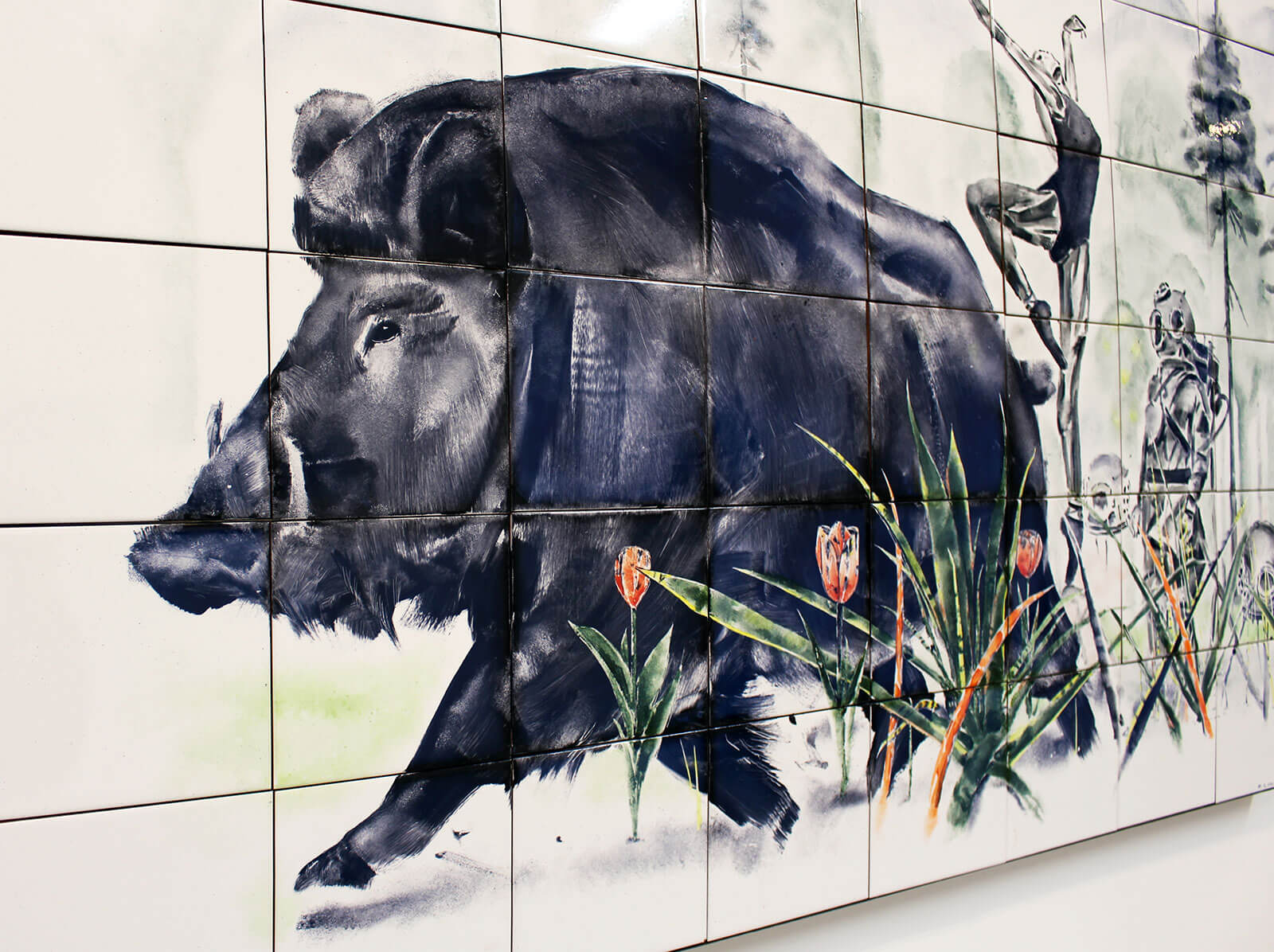
Pista Horror, ‘Siren’, 2020
COURTESY: David Kovats Gallery
“It’s important to know that his alter ego is not a consequence of a traumatic experience,” says Kovats of his pseudonym, nor an attempt to protect his identity. (Pista is the diminutive of István, the Hungarian equivalent of Steve.) Rather it’s a name that “evokes a whole range of heroic folk outlaws and outsiders in Hungary, making him sound like a comic-book superhero. It expresses the liberating idea of art as a game, enabling him to mix images and motifs.” Most importantly, it lets his imagination run riot.
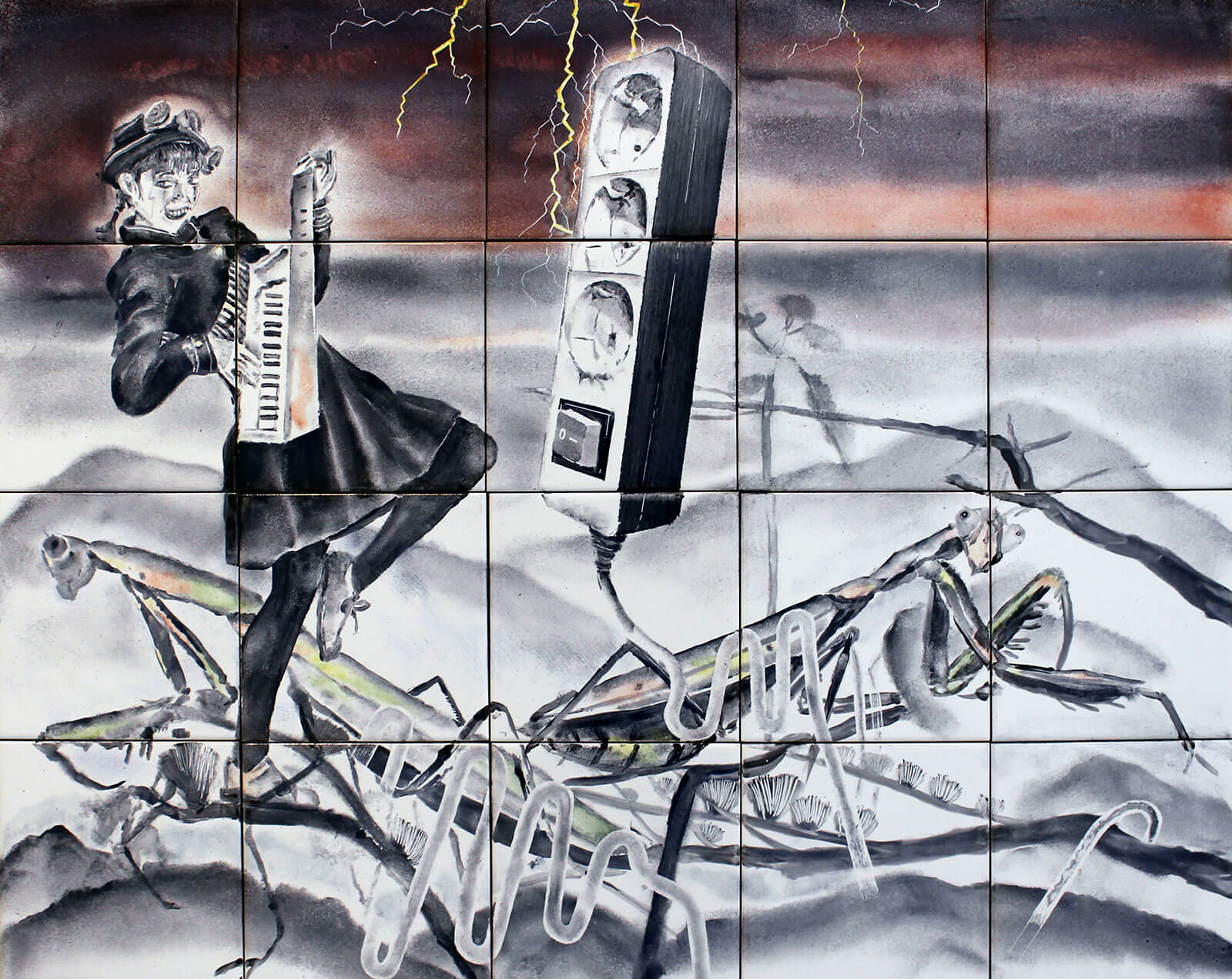
Pista Horror, ‘Italo New Wave’, 2020
COURTESY: David Kovats Gallery
Technically accomplished – look at the skill with which he paints mist on a hill or the musculature and coarse pelt of a wild boar – and rich in symbolism, the works have a fantastical if dystopian quality. His field of reference stretches from Kitana, the 10,000-year-old princess from the video-game franchise Mortal Kombat video, to a 1920s Hertwig Katzhütte figurine of a woman and dog. Indeed, the motifs that stand out in his sometimes surreal compositions are animals: an elephant, a mammoth, crocodiles, rats and yet more menacingly the “Csodaszarvas” or “Miraculous Deer” of Hungarian legend. These deer are no longer the benign white hind that led two brothers, Hunor and Magor, to the land that became Hungary – but a looming, threatening presence pursuing a van across a snowy waste.
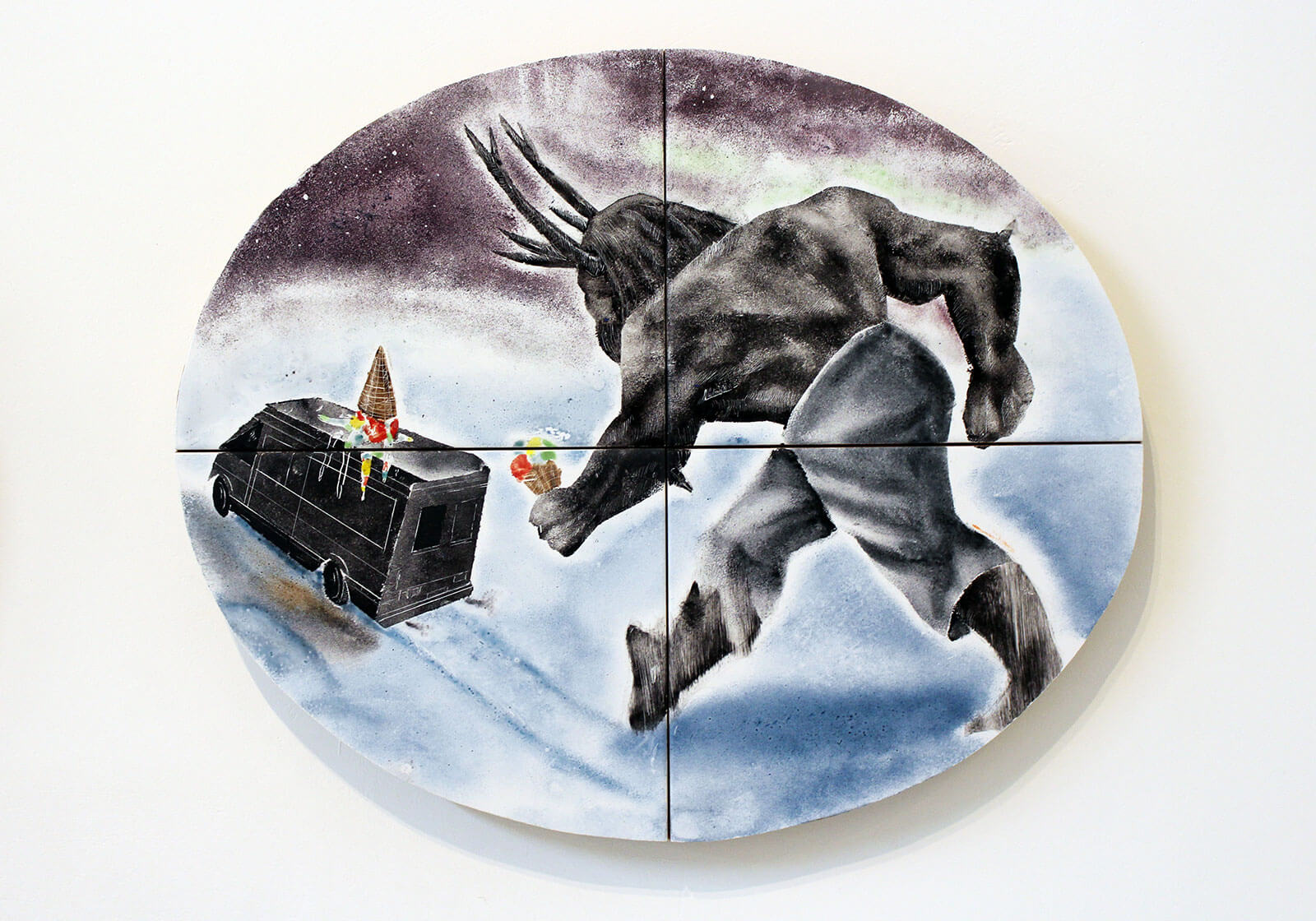
Pista Horror, ‘Miraculous Deer’, 2020
COURTESY: David Kovats Gallery
The tiles – commercially produced to ensure a uniform surface – have magnets fixed to the back, which then adhere to iron-coated panels so they need not be fixed permanently to a wall. There is no grouting. But the fact that he uses porcelain paints, which are then fired, means their surfaces are extremely durable.
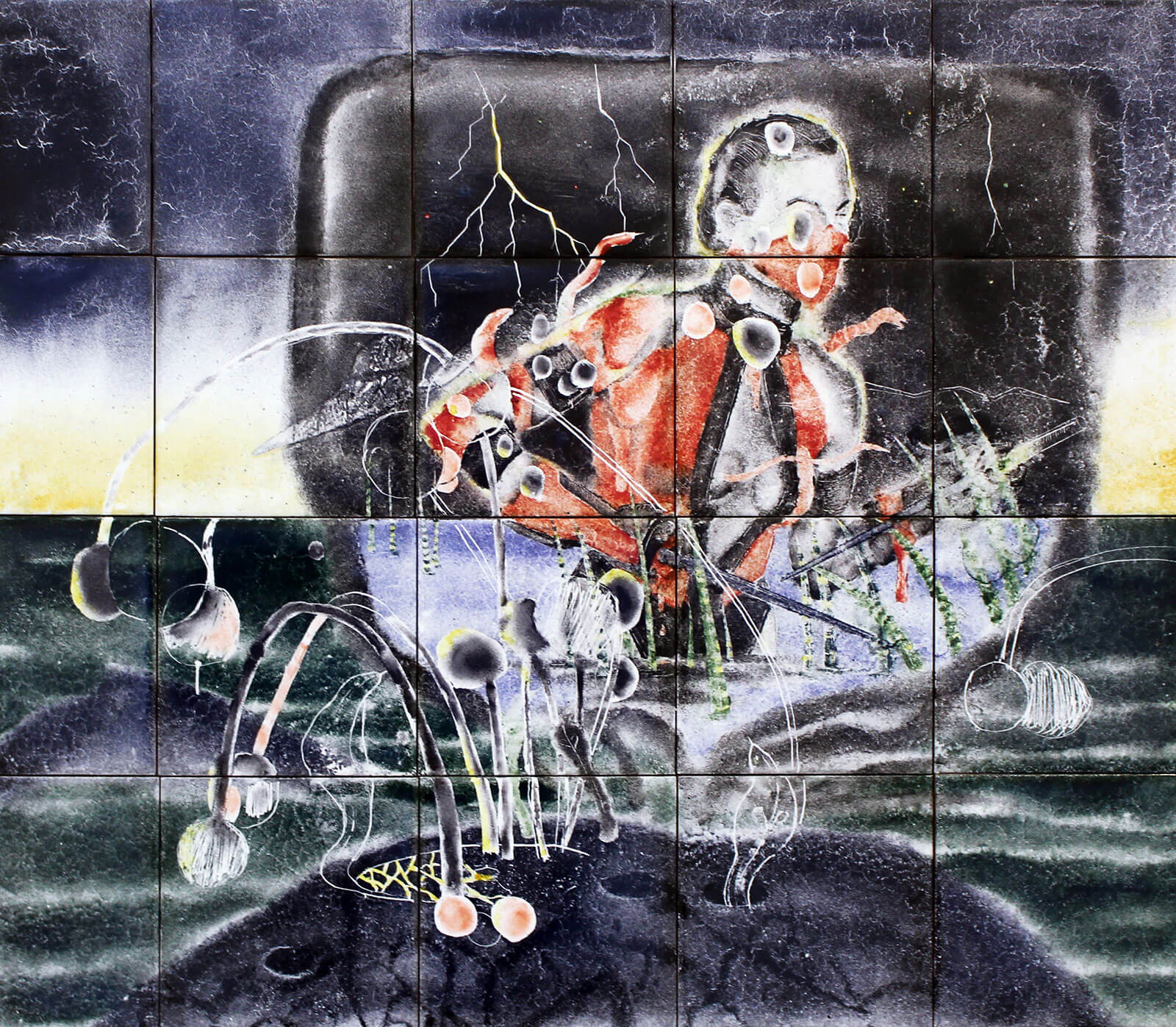
Pista Horror, ‘Kitana’, 2020
COURTESY: David Kovats Gallery
David Kovats – represents a unique and high-quality cross-section of Eastern European contemporary artists whose work remains absent from the international market.




